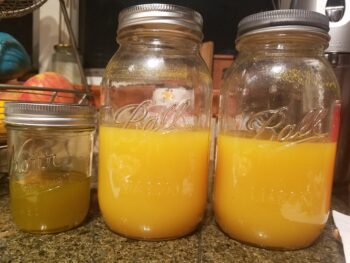Honey bees are remarkable creatures that play a vital role in our ecosystems as pollinators. Their complex social structures and behaviors have captivated researchers and bee enthusiasts for centuries. One of the most intriguing behaviors exhibited by honey bees is swarming. Swarming is a natural phenomenon in which a colony of bees divides and a large group, including the queen, leaves the hive to establish a new colony elsewhere. In this essay, we will delve into the reasons why honey bees swarm, exploring the underlying mechanisms, benefits, and challenges associated with this captivating behavior.
- Colony Reproduction and Expansion:
Swarming is primarily driven by the colony’s need for reproduction and expansion. Honey bees reproduce by dividing the existing colony into two or more independent units. The original colony, known as the parent colony, gives rise to one or more swarms, each consisting of thousands of worker bees, drones, and the original queen. This process allows the bees to colonize new areas and ensures the survival and continuation of the species.
- Overcrowding and Resource Limitations:
A significant factor that triggers swarming is overcrowding within the hive. As the colony grows in size, the available space within the hive becomes limited. Bees require ample space to carry out their daily activities, including storing honey, raising brood, and communicating with each other through complex dances and pheromones. When the hive becomes too congested, it initiates a swarm to alleviate the overcrowding and prevent potential resource shortages.
- Queen’s Pheromones and Aging:
The role of the queen bee is crucial in the swarming process. As the queen ages, her pheromone production decreases, which influences the behavior of the worker bees. Pheromones play a pivotal role in maintaining colony cohesion and organization. When the queen’s pheromone levels drop below a certain threshold, the worker bees interpret this as an indication of her declining health or potential loss. In response, the colony begins preparations for swarming, producing new queens to ensure the survival of the colony.
- Swarm Preparation:
Prior to swarming, the colony undertakes a series of intricate preparations. The worker bees construct special queen cells, also known as swarm cells, in which new queens are reared. These queen cells are larger than the regular brood cells and are positioned vertically on the comb. The production of new queens allows for the establishment of multiple colonies, increasing the chances of survival and successful reproduction.
- Swarm Departure:
When the new queens are ready to emerge, the original queen and a large number of worker bees leave the hive in a spectacular event known as swarm departure. The swarm forms a dense cluster in a nearby location, such as a tree branch or fence, while scout bees search for a suitable new home. The cluster is temporary, as the bees are waiting for the scouts to communicate their discoveries and reach a consensus on the new nesting site.
- Choosing a New Home:
The scout bees employ a remarkable decision-making process called “swarm intelligence” to select a suitable location for the new colony. They evaluate potential nesting sites based on factors such as size, location, temperature, and safety. Through intricate dances and chemical signals, the scouts communicate their findings to the swarm, allowing the bees to collectively choose the most favorable site. Once a consensus is reached, the swarm takes flight and relocates to the chosen location.
- Benefits and Challenges of Swarming:
Swarming offers several advantages to honey bee colonies. It allows for the expansion of the population, increases genetic diversity through mating with drones from different colonies, and enables the colonization of new habitats. Additionally, swarming reduces the risk of disease and parasites by leaving behind old combs and debris. Moreover, swarming provides an opportunity for beekeepers to capture and establish new colonies, supporting bee conservation efforts.
However, swarming also presents challenges and risks for both the bees and human populations. For the bees, the swarming process can be physically demanding and exhausting, especially for the queen. Additionally, the process of finding a new home exposes the bees to potential dangers, such as predators or adverse weather conditions. For humans, swarms can be perceived as threats, leading to concerns about stinging incidents, particularly in urban areas.
Conclusion:
Honey bee swarming is a fascinating behavior that arises from the complex social structure and biological needs of honey bee colonies. Driven by overcrowding, resource limitations, and the queen’s pheromones, swarming ensures colony reproduction and expansion. It allows for genetic diversity, reduces disease risks, and supports the survival and propagation of honey bee populations. Understanding the reasons behind swarming enhances our appreciation for the remarkable strategies employed by these industrious insects and highlights the importance of preserving their habitats and protecting their populations in the face of numerous challenges.








 What is Propolis
What is Propolis